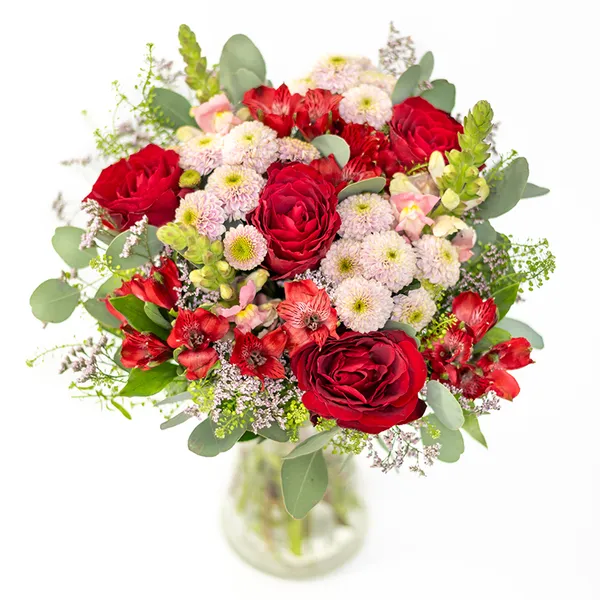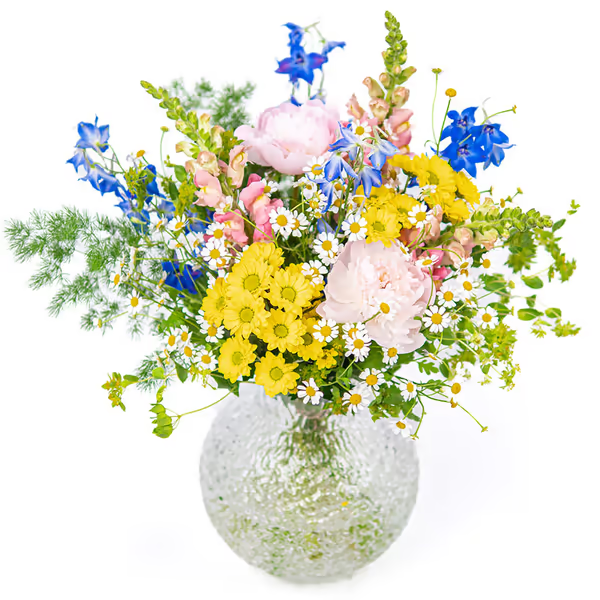Snapdragon: The Playful Bloom of Boldness and Charm
Snapdragons, with their dragon-shaped blooms that "snap" open when squeezed, are a cheerful and striking addition to gardens and bouquets. Belonging to the plantain family (Plantaginaceae), these upright, spiky flowers bloom in vivid shades of pink, red, yellow, white, orange, and purple. Native to the Mediterranean, snapdragons are known for their long blooming season, bright colours, and symbolism of grace and strength. They're also pollinator magnets and a nostalgic favourite in cottage and wildflower gardens.
COMMON NAME
Snapdragon
BOTANICAL NAME
Antirrhinum majus
ORIGIN
Mediterranean (Spain, Italy, North Africa)
PEOPLE ALSO CALL IT
Dragon Flower, Lion’s Mouth, Bunny Rabbit Flower
FLOWERING TIME
Spring to autumn (May to October)
ASPECT
Full sun, fertile, well-drained soil
SYMBOLISM
Boldness, grace, strength, playful charm, resilience
Care Tips for Cut Snapdragon in a Vase
Trim stems at an angle: Always cut the stems diagonally with a sharp, clean knife or scissors to improve water intake and prevent stem blockage.
Use a tall, sturdy vase: Snapdragons have long stems and heavy flower spikes—using a tall vase prevents drooping and helps support the upright growth.
Remove all foliage below the waterline: Leaves submerged in water decompose quickly and promote bacterial growth, which shortens vase life.
Change the water every 2 days: Fresh water prevents bacteria build-up and keeps the stems firm and flowers vibrant.
Add flower food if available: It helps nourish the blooms and prolong their life.
Pinch off wilted flowers: As the lower flowers fade, remove them to direct energy to unopened buds.
Keep away from direct sun and drafts: Place arrangements in a cool area to extend vase life—5 to 8 days on average.
Symbolism & Meaning
Snapdragons represent boldness, inner strength, and resilience, as they often bloom when other flowers fade. In folklore, they were believed to ward off deception and protect against curses. At the same time, their playful shape and movement when squeezed make them a symbol of charm, fun, and mischief—perfect for lighthearted gifts and joyful arrangements.
Types of Snapdragon
‘Rocket’ series – Tall, sturdy stems ideal for cutting and garden borders.
‘Madame Butterfly’ series – Double-flowered, ruffled petals with a romantic look.
‘Sonnet’ and ‘Liberty’ series – Medium-height hybrids with long bloom time.
‘Candy Showers’ – Trailing snapdragons suitable for hanging baskets.
Dwarf varieties – Such as ‘Floral Showers’ or ‘Montego’, compact and ideal for containers.
Frequently Asked Questions About Snapdragon
Snapdragons are not reliably winter-hardy in most parts of Europe. In mild regions, they might survive light frost, especially if mulched well. In colder climates, they are treated as annuals, though some may self-seed.
Snapdragons are generally considered non-toxic to humans and animals. They’re safe for gardens where children or pets play
Snapdragons prefer a sunny to lightly shaded spot with well-drained, nutrient-rich soil. They bloom best with at least 4–6 hours of sun per day and don’t like soggy conditions.
Botanically, snapdragons (Antirrhinum majus) are short-lived perennials, but in cooler climates they are usually grown as annuals or biennials. With a mild winter and good care, they might survive to bloom again.
Regularly deadhead spent blooms to encourage new flowers and extend the blooming season. After flowering, you can cut the plant back by half to tidy it up or promote a second flush. In autumn, cut back completely if treating as an annual.
Sow snapdragon seeds indoors from February to April, in trays with light, moist seed compost. The seeds are light germinators – don’t cover them with soil. Keep at 18–20 °C with plenty of light. Harden off and plant outside after the last frost.
No, snapdragons are non-toxic to cats. They’re considered safe if your feline friend happens to nibble a leaf or flower.



